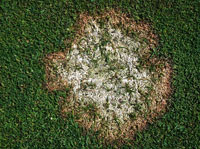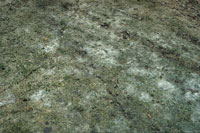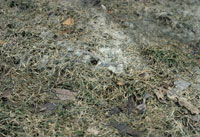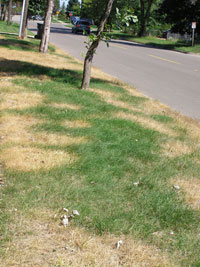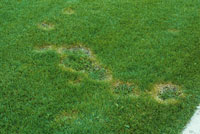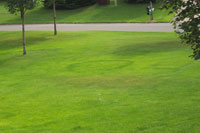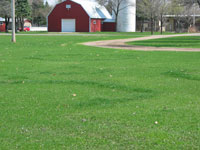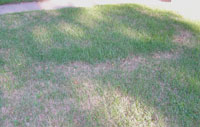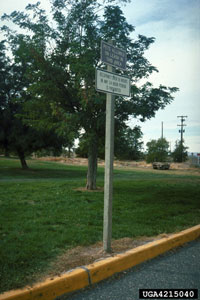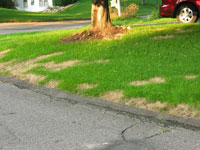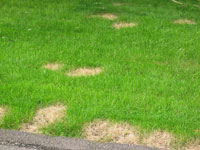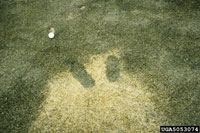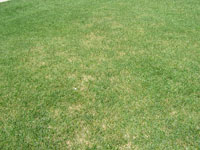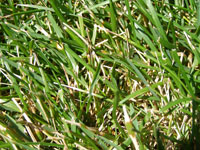Extension > Garden > Diagnose a problem > What's wrong with my plant? > Turf > Distinct circular patches, rings, or arcs
Turf > Distinct circular patches, rings, or arcs
1 of 7
Pink Snow Mold
Microdochium nivale
- Round patches of tan to gray matted down grass, 2 to 8 inches wide
- Patches appear pale pink in the sun, and may have a gray border
- Many patches may grow together to create large dead areas in the lawn
- Disease only occurs in wet conditions at close to freezing temperatures (early spring is most common)
2 of 7
Gray Snow Mold
Typhula sp.
- Round gray patches of matted down grass, 1 inch to 3 feet wide
- Patches may appear silvery-gray and brittle when dry
- In wet conditions cobweb-like fungal growth can be seen on the patches
- Tan to dark brown, hard oval to round ball the size of bee-bees occur on infected grass blades
- Many patches may grow together to create a large dead area in lawn
- Disease only occurs in wet conditions at close to freezing temperatures (early spring is most common)
3 of 7
Patch diseases
Rhizoctonia sp., Magnaporthe sp. and Opioshpaerella
korrae
- Patches of tan upright dead grass in round patches, rings or arcs
- Patches start out 2 to 4 inches wide, but can grow up to 2 to 3 feet wide
- No spots on leaves
- If dug up, roots and crowns of grass plants are black, roots may be rotted, short and thin
- Symptoms commonly appear during a hot, dry period following cool, wet weather
4 of 7
Fairy Rings
Many different saprophytic fungi
- Dark green rings or arcs in lawn, and inner ring of brown grass may or may not be present
- Grass in the ring or arc may be taller than surrounding grass
- Mushrooms may be present in rings or arcs during wet weather
5 of 7
Dog spots
- Common in lawn areas visited by dogs
- Typically circular areas of dead grass less than 12 inches across; several patches close together may form larger, irregular dead areas
- Dead grass plants initially tan to light brown in color
- Grass plants on the perimeter of the affected area are darker green and taller than the rest of the lawn
- If spots are watered thoroughly, followed by reseeding, new grass plants usually germinate and successfully fill the original dead area
6 of 7
Non-selective herbicide injury
Trade names: Round-up, Kleen-up, among many others
- Occurs in areas where non-selective herbicides (kill all green plants) have been applied
- Irregular to round patches of dry, tan grass; pattern of damage follows pattern of herbicide application
- Affected grass plants are initially light tan to straw-colored, later turning dark brown
- Usually a distinct boundary between affected and healthy plants
- Weeds or other plants in the area are brown, dried up or dead as a result of applying these herbicides
7 of 7
Dollar Spot
Sclerotinia homeocarpa
- Randomly scattered tan to gray round dead patches, 2 to 6 inches wide
- Cobweb like fungal growth on infected grass blades during cool wet periods like early morning
- Leaf blades have dry, tan sections with a rusty-brown border, early leaf infections may be a dry, tan oval with a rusty brown border
- Many small patches may grow together to create larger areas of thin, tan grass




